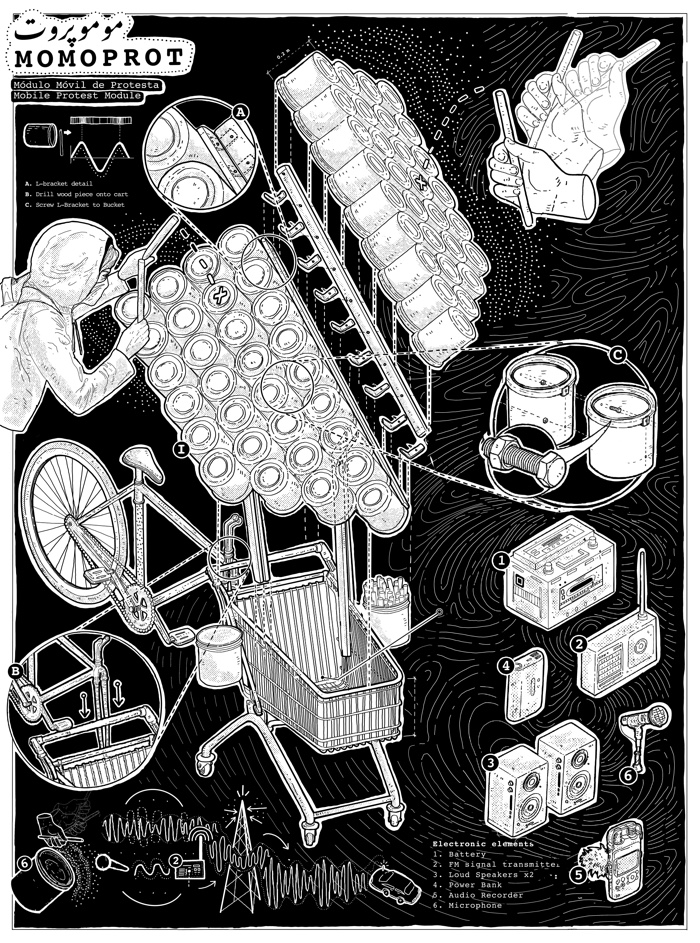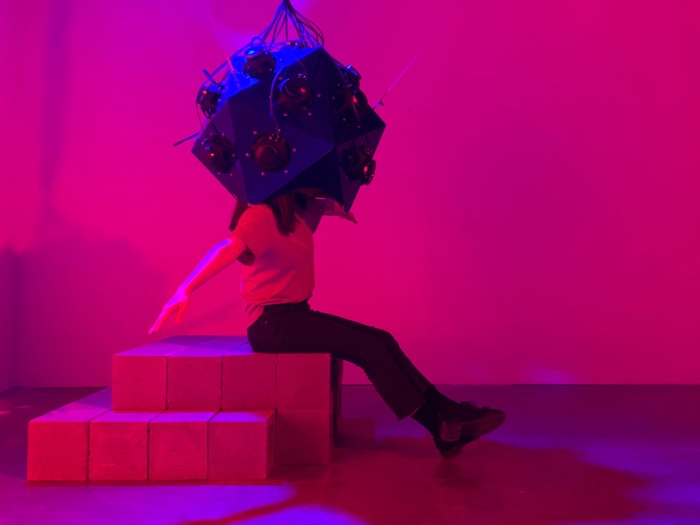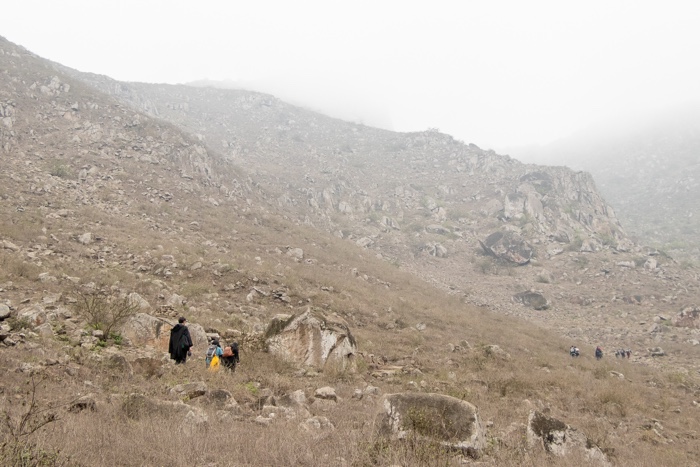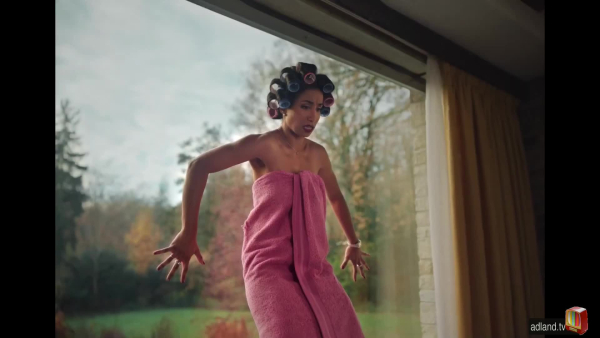McDonald's – Stuck / Home Delivery – (2024) :60 (France)
Posted in: UncategorizedHow Claire’s Left the ‘90s to Reach a New Generation of Youth
Posted in: UncategorizedFor women who grew up in the 1990s or 2000s, retailer Claire’s may trigger a wave of nostalgia. Once a fixture of suburban shopping malls, the store was a mecca for tween girls: the place for first ear piercings and a treasure trove of glittery scrunchies, butterfly clips and berry-flavored lip gloss. As those girls…
If Microsoft Is My Copilot, I Must Be Flying the Plane
Posted in: UncategorizedJasper, Claud, Clara, Bixby, Cleo…these are some of the AI assistants eagerly awaiting your queries and your manufactured need for speed. The field is growing crowded, which makes sense when you understand how much money there is to be made. The global artificial intelligence market, worth USD 136.55 Billion in 2022, is likely to grow […]
The post If Microsoft Is My Copilot, I Must Be Flying the Plane appeared first on Adpulp.
CeraVe’s Michael Cera Super Bowl Stunt Was a Masterclass in ‘Edutainment’
Posted in: UncategorizedLike lots of funny things, Ogilvy’s Super Bowl campaign for CeraVe started on a Reddit thread, speculating about whether Superbad actor Michael Cera was connected to the brand because of his name. This evolved into an influencer campaign, speculating about Cera’s links to the skincare business. The star put in the work too–he was papped…
The Flavor Files: How Spicy Is Truly’s Hot Wing Sauce Hard Seltzer?
Posted in: UncategorizedCan a hard seltzer spice you out? Truly Hard Seltzer debuted its Hot Wing Sauce hard seltzer, just in time for the Super Bowl. While the company didn’t have a traditional advertising spend for the Big Game, it decided to get creative and “crash the party.” After testing several iterations (including a ranch-flavored drink), the…
In Big Election Year, A.I.’s Architects Move Against Its Misuse
Posted in: UncategorizedAnthropic, OpenAI, Google, Meta and other key developers are acting to prevent the technology from threatening democracies, even as their tools become more powerful.
Too Hot for the NFL? Cardi B’s Spicy Ad for NYX Got Neutered for the Super Bowl
Posted in: UncategorizedAudiences watching Super Bowl 58 on TelevisaUnivision and in the top 10 American markets this past Sunday were supposed to see a NYX ad starring Cardi B and a bunch of goofy guys who had misused Duck Plump lip gloss to enhance their privates. It was a saucy and suggestive story that should have rolled…
TechMagic Podcast: Tech at the Super Bowl and the Future of Video Games
Posted in: UncategorizedIn this week’s episode, host Cathy Hackl and guest host Lee Kebler recap the Super Bowl and the tech they noticed during the show. Kebler finally had a chance to demo the Apple Vision Pro and they discuss the use of AI on the device, as well as how it compares to the Meta Quest…
Papa John’s Gave Away $58,000 Pizzas During Super Bowl 58
Posted in: UncategorizedPapa John’s didn’t air an ad during Super Bowl 58, but the pizza chain did bring its marketing team to Las Vegas for a Super Bowl-themed stunt: delivering a pizza worth $58,000 to two sweepstakes winners, a surprise that involved baking fake money into the crust. At a Las Vegas Papa John’s location just off…
OpenAI’s Web Search Product Aims to Challenge Google’s Search Supremacy
Posted in: UncategorizedGoogle Search could face yet another formidable challenger thanks to OpenAI’s latest developments. Top line The ChatGPT maker is working on a web search product partially powered by Microsoft Bing, bringing the startup in more direct competition with Google. The news was first reported by The Information. It’s unclear whether this product would be a…
OpenAI lança Sora, novo modelo de inteligência artificial de texto para vídeo
Posted in: Uncategorized
A OpenAI promete elevar o patamar da criação de conteúdo digital com o lançamento do Sora, seu mais recente modelo de IA capaz de transformar instruções textuais em vídeos fotorealistas. A ferramenta é capaz de gerar cenas complexas, incluindo múltiplos personagens, tipos específicos de movimento e detalhes precisos de objetos e fundos. Capacidades inovadoras De …
Leia OpenAI lança Sora, novo modelo de inteligência artificial de texto para vídeo na íntegra no B9.
Nubank vai lançar curta com Leslie David Baker, o Stanley de “The Office”
Posted in: Uncategorized
Leslie David Baker, conhecido por seu icônico papel como Stanley em “The Office”, desembarca no Brasil para uma campanha inusitada do Nubank. A presença do ator no Brasil, revelada através das redes sociais do Nubank, foi apenas o prelúdio de algo maior. A fintech lançou um teaser de “Planos no Papel”, um curta-metragem que promete …
Leia Nubank vai lançar curta com Leslie David Baker, o Stanley de “The Office” na íntegra no B9.
Inside HBO’s Ice-Cold True Detective: Night Country Marketing Stunts
Posted in: UncategorizedTrue Detective: Night Country is giving viewers marketing that’ll make them stop cold. Premiering almost 10 years to the day of Season 1’s debut, the fourth season of True Detective has revitalized the franchise thanks to increasing viewership and marketing stunts that continue to capture fans’ imagination. Starring Jodie Foster and Kali Reis, the series…
The Next Era of Subscriptions: 3 Trends Shaping Publishers’ Paid Products
Posted in: UncategorizedWhen TechCrunch shuttered its subscription product last month, the abrupt closure rattled the news industry, triggering fears that reader revenue products, and the stability they provide, were at risk of backsliding. But subscription data from multiple firms, as well as interviews with digital subscription experts, proves the opposite, and trends like an uptick in consumer…
Como a CeraVe ganhou o Super Bowl 2024
Posted in: Uncategorized
Se você vai gastar 7 milhões de dólares para comprar 30 segundos no intervalo do Super Bowl, é bom que funcione. Certo? É por isso que, tradicionalmente, as marcas gastam ainda mais em cachês milionários para estampar celebridades de todo tipo em seus comerciais. Afinal, a oportunidade é única e o tempo é curto para …
Leia Como a CeraVe ganhou o Super Bowl 2024 na íntegra no B9.
The Art of Making Pretzels Part of Every Conversation
Posted in: UncategorizedYou might be wondering how an iconic pretzel brand that’s been around for 26 years continues to go viral over and over again. Well, one thing we know to be true is that everyone loves hot, handmade, pretzels. But that’s not the only reason why. Auntie Anne’s has become a brand on social that takes…
Greenwashing Crackdown Begins on EU Brands Making Vague Eco Claims
Posted in: UncategorizedEuropean brands and companies will no longer be able to cite weak claims of carbon offsetting as regulations to battle greenwashing practices are tightened. The European Parliament made recommendations to strengthen its legal framework, which, alongside vague net zero and sustainability claims, will also include carbon neutral/reduction claims around products and the banning of brand-owned…
Interview with Nicolás Kisic Aguirre: building a disobedient robotic world
Posted in: UncategorizedNicolás Kisic Aguirre builds rolling, gyrating, unruly machines that have been exhibited all over the world. Sometimes, however, they escape gallery spaces and take to the streets of Valparaíso or Boston where they amplify the voice of citizens protesting against racist deportations, inequality or the presence of a war criminal in town. Whether they are deployed in artistic performances or used as a tool to broadcast political messages, Kisic Aguirre’s works challenge the boundaries of our common understanding of the city and the spaces we share in it.
The Monoprot, for example, is a mobile protest module made of discarded material and equipped with a pirate FM radio station and a PA system. Once left in the hands of citizens, it becomes a forceful tool of collective rhythmic expression and transmission. The Speaker Tower is an urban-scale rotating loudspeaker system that can be deployed at the service of urban communities to protest but it can also amplify peaceful voices and messages from the Peruvian Amazon.
<img data-attachment-id="35285" data-permalink="https://we-make-money-not-art.com/interview-with-nicolas-kisic-aguirre-building-a-disobedient-robotic-world/olympus-digital-camera-11/" data-orig-file="https://we-make-money-not-art.com/wp-content/uploads/2024/02/4caacff82899fc_rw_1920.jpg" data-orig-size="700,525" data-comments-opened="0" data-image-meta="{"aperture":"6.3","credit":"","camera":"E-M5MarkII","caption":"OLYMPUS DIGITAL CAMERA","created_timestamp":"-62169984000","copyright":"","focal_length":"42","iso":"200","shutter_speed":"0.008","title":"OLYMPUS DIGITAL CAMERA","orientation":"1"}" data-image-title="OLYMPUS DIGITAL CAMERA" data-image-description="" data-image-caption="
OLYMPUS DIGITAL CAMERA
” data-medium-file=”https://we-make-money-not-art.com/wp-content/uploads/2024/02/4caacff82899fc_rw_1920-300×225.jpg” data-large-file=”https://we-make-money-not-art.com/wp-content/uploads/2024/02/4caacff82899fc_rw_1920.jpg” src=”https://we-make-money-not-art.com/wp-content/uploads/2024/02/4caacff82899fc_rw_1920.jpg” alt=”” width=”700″ height=”525″ class=”size-full wp-image-35285″ />
Nicolás Kisic Aguirre , Speaker Wheel #2. Photo: Madeleine Gallagher

Workshop session led by artist Jana Winderen with the help of Jan Moss and Nicolás Kisic Aguirr at the Venetian Swamp. Photo: Norbert Tukaj

Nicolás Kisic Aguirre , Dispositivo de Realidad Mutada (Mutated Reality Device). Photo: NKA
Just as you think you can label Kisic Aguirre as an artist whose work focuses on the cultural and hidden dimensions of public spaces, you realise that his practice has multiple dimensions and ambitions. His Dispositivo de Realidad Mutada (Mutated Reality Device) encloses you inside a a 360-degree icosahedron with sixteen ambisonic sound channels that immerse you in a wash of sounds that may even appear kilometres away from the 10cm distance between their head and the machine. The DRM is part of Kisic Aguirre’s experiments with robots that unlearn their machine lessons and become subjects that disobey their purpose.
And if all of the above were not enough, the architect and transdisciplinary sound artist also engages in experimental radio broadcasts and other acoustic explorations.

Nicolás Kisic Aguirre working on The Sky Commodified in San Pedro de Atacama. Photo: Aaron Powers
Hi Nicolás! You studied architecture, and yet most of your practice revolves around sound art. One is as material and tangible as the other is immaterial. Do you see your sound machines as another way to do architecture?
Very much so. I often talk about how I “escaped” architecture only to find myself thinking and doing architecture in a different way again. As an architect, I was interested in public space, although I was conceptually constrained to plazas, sidewalks, parks, and the street. When I started focusing on sound, I realized that the air, the entire air around us, was also public space, although invisible. I understood sound as the material that can best claim the air around us.
I also understood that this “sonic space” is highly contested. Different parties claim it with particular agendas that range from commercial to religious to military interests, often empowered by artifacts they develop to serve their interests. Church towers, drumming patterns, and Amazon Alexa all have in common that they represent technologies developed to create unique claims on the sonic space.
In this sense, my machines are devices that I build to explore a “civilian” or perhaps “cultural” claim on the sonic space. They are the endpoint through which we can build in the air with our own–public–interests. To me, this is architecture.

Nicolás Kisic Aguirre, Momoprot @ Valparaiso 2020 W/ Tsonami Arte Sonoro. Photo: Pablo Saavedra
Nicolás Kisic Aguirre, Momoprot @ Valparaiso 2020 W/ Tsonami Arte Sonoro. March in Valparaíso, Chile. Video: Pablo Saavedra / Fernando Godoy
Your practice is collaborative and deeply engaged with the public. Which role does the public play in how your machines are developed, deployed, and used? Which tactics do you use to engage the public?
Not all my projects are directly situated in public spaces. Some stick to my studio as research companions! But when my machines are in public spaces, I frequently think about what they represent, not only acoustically but also visually. I am allured by the opportunity to create unexpected moments of surprise with strange objects suddenly appearing on the street. I invite the public to engage with their wildest sense of imagination and to contribute with their interaction. My machines interface this interaction. Sometimes directly, like with the Momoprot. Other times indirectly, throughout the process, or even by simply having a profound conversation at some point. I’ve met people and learned so much after discussing the strange experiences surrounding my projects.
There’s another dimension to this collective collaboration. I invite people to create their own versions of my projects. I am behind with creating manuals for all of my projects, but I am very happy with the manual for the Momoprot, beautifully illustrated by Sarah Aladayleh. I haven’t seen a mutation of the Momoprot yet, but I dream of the day that gifts me the interest of others in this way.

Momoprot, illustration by Sarah Aladayleh

Nicolás Kisic Aguirre, Ícaro Aéreo, A Collaboration with Rawa Muñoz. Photo: Pablo Saavedra
Nicolás Kisic Aguirre, Speaker Tower
I’ve also been wondering how authorities react to the ways you use sound in public space. Have the police ever asked you to go away, for example? Or do you have to apply for permission to use the machines in squares?
I’ve never asked permission. Public space is there for us to claim spontaneously, and asking for permission would defeat the purpose of this “claim.” But I do get scared. In Chile, with the Momoprot, I was pedaling a super-heavy slow artifact to the frontlines of the Carabineros, who were ready and willing to kill. I remember one day, we stood in the center of a plaza while the police fired a water cannon at the crowds. The water couldn’t reach the center, and, for a small group of protesters, we found protection behind the Momoprot.
Another time, in Boston, the MIT police got pretty scared with the Speaker Tower. We were there to protest against Henry Kissinger and had advertised a “Speaker Tower” workshop. The Speaker Tower is entirely innocent, but I think the MIT police overreacted to the possibility of the device. I imagine they thought the Speaker Tower could be a sophisticated sonic weapon developed at MIT. They had two or three agents following us everywhere! 10 feet behind us: we turned left, and they turned left. We stopped, they stopped. It was scary then, although it’s pretty comical as an anecdote.

Nicolás Kisic Aguirre, Speaker Tower. Instruments of Protest @ The February School. Photo: NKA
Telefonica corporate building near Plaza Italia, Santiago de Chile. Video: NKA
When i think of people collectively and creatively using sound to protest, i think about the caserolazos in Argentina or the casseroles in France. The pot-bangers who contest the austerity measures of Javier Milei and Emmanuel Macron. Your machines are equally eloquent and rebellious but, unlike their French and Argentinian counterparts, they are pleasant to hear. How do you navigate between sounds that signify protest but do not annoy passersby and sounds that just create cacophony? Is it a question of being more or less loud? Of having a certain rhythm?
Indeed, “cacerolazos” are a supreme source of inspiration. They are the perfect example of how using simple household items like pans, pots, and spoons can become a powerful statement of collective expression. To me, listening through a “cacerolazo” is actually a pleasant experience! And perhaps this highlights how noise is such a relative term. In most instances, “cacerolazos,” noise machines, protest machines, and expressions, I think, try to be an expression of noise–of sound “out of place”–to whomever they are protesting against. You want to be a nuisance, an obstacle in their harmonious order.
But within these expressions of protest, there is a different reality. Often, joy, celebration, and hope are at the center of people’s hearts, and the sound of these “noises” is energy-filling, empowering, and harmonious in that sense. Sometimes, it is more or less loud, more or less rhythmic… However, I think the question is mostly always about collective expression.
I’d also like to discuss the aesthetics of your sound machines. They are striking but they do not look threatening. What guides the design and visual appearance of the machines?
Some design principles motivate me. For example, I am obsessed with modularity. You can see this in my work. When I find an attractive solution, I tend to repeat it to create bigger artifacts based on the initial module. I frequently re-use these modules to create other objects. I will always love repetition. And this makes it easy for others to build things, too; the open-source aspect of my pieces augments when their construction is more accessible.
The other principle that guides my work is what Ernesto Oroza would call “technological disobedience.” The Brazilians call it “gambiarra.” To me, the possibility of using anything to achieve something, oftentimes by subverting the initially intended purpose of objects. I often use planters and buckets, and I patch my work in a very visible way when it needs repair because I adore the aesthetic visual aspect of repaired things. All of this makes my work more accessible and easier to replicate, too. To me, this is important.
Finally, the designer in me still follows his intuition in shaping his projects. I wouldn’t know how to explain it, but I think it might imprint aspects of my personality onto my machines and devices. I’m glad they don’t look threatening to the public; sometimes, this ambiguity is an excellent way to reach places that would’ve been forbidden initially.

Nicolás Kisic Aguirre, Dispositivo de Realidad Mutada. Photo: NKA
Nicolás Kisic Aguirre, Dispositivo de Realidad Mutada. Video: NKA (2022)
You describe The Dispositivo de Realidad Mutada (Mutated Reality Device) as “an inhabitable ambisonic sculpture. Inside, space expands far beyond its compact walls and invites listeners to navigate the worlds that result from disobedient linguistic experiments assisted by an AI.” What happens once you put your head inside the DRM?
And what do you mean by disobedient linguistic experiment?
The DRM is a hybrid, part-human, part-machine, multidimensional sculpture. With this project, I invite participants to become one with the DRM by inhabiting the artifact while surrendering sensorial perception. Once you put your head inside the DRM, the narrow borders of the micro-capsule are counterbalanced with a holographic acoustic experience that renders the illusion of a borderless alternative world based on the Peruvian Amazon.
This alternative world results from experiments in linguistic disobedience employing a “Machine Unlearning” model I developed to render mutations of Spanish. Using Natural Language Processing (NLP), I am raising a dataset with a collection of works of literature that poetically distort Spanish (my native language.) For example, I have included César Calvo’s Las tres mitades de Ino Moxo y otros brujos de la Amazonía because it highlights the poetic “distortions” of the Peruvian Amazonian dialect. At the same time, Calvo narrates a magical realist story set in the Amazon, heavily influenced by the sacred experience of Ayahuasca. My “Machine Unlearning” process cultivates new–often invented–words and meanings by reconfiguring speech frequently unrecognized by the “official” European Spanish Royal Academy. This way, language appears mutated, and the reality it reflects also mutates.
I created the experience of the DRM to reflect this “disobedient reality.” I composed acoustic holography by carefully stitching together and overlaying sound captured directly in the Peruvian Amazon. Employing ambisonics technologies, I received the blessing and guidance of my friend, Shipibo artist Rawa Muñoz, to capture the acoustic reality surrounding his native community, San Francisco de Yarinacocha. Rawa also gifted Realidad Mutada with the magic of his sacred song, the icaro.
At the core of Realidad Mutada is my artistic research titled ‘Disobedient Robots.’ In Disobedient Robots, I explore the robotic voice through linguistic mutation as a generative gesture towards robotic agency and disobedience.

Radio Apu workshop/exploration, with Arely Amaut and local school students. Photo by Gianella Espinosa

Radio Apu workshop/exploration, with Arely Amaut and local school students. Photo by Gianella Espinosa

Radio Sosegadx in GoctaLab. Sculptural Antenna for Sosegadx made out of mud by Nicolás Kisic Aguirre. Photo by Sergio Abugattas
You have studied and worked all over the world but does your country, Peru, inform your work? Do you draw inspiration from its culture and history, for example?
I certainly do. I still practiced as an architect when I left Peru 9 years ago. After that, I “switched” to practicing art and have had some opportunities to develop work in Peru. Now that I think about it, it is primarily related to radio, a medium I adore. Recently, I was an Artist in Residence at GoctaLab in the Amazonas region up north. We created the first pirate FM transmission with Radio Sosegadx and hope to create many more! Similarly, I’ve collaborated with Arely Amaut on Radio Apu, exploring the sonic intensities of the sacred Lomas de Lúcumo ecosystem in the south of Lima. Finally, in November 2020, I created an online archive called Insurgencia Radio to preserve the memory of a significant uprising in Peru against a government takeover. Protests throughout the country were crucial and pressured the guy who took over to resign. I was in Berlin at the time, and Insurgencia Radio was my way of contributing to this uprising.
Other aspects of my work are rooted in the Amazonian Cosmovision–I am not from the Amazon, but I learn from my friend Rawa Muñoz, whose voice resonates in some of my work and whose collaboration has taught me so much.
Peru will always inform my work, but sometimes subtly. I try to stay away from exoticizing or tokenizing myself as a Peruvian rarity–the art world sometimes expects this from us “global southerners,” and I am not attracted to this.
What’s next for you? Any upcoming events, projects or research you’d like to share with us?
I’m currently focusing on making progress with Disobedient Robots. I’m now building new robots to join the Dispositivo de Realidad Mutada in a constellation of artifacts and devices that will interact with each other and audience members in creating this disobedient robotic world. But working with robots is expensive; who would have thought… funding is essential for me to move forward so I’m working on many applications too.
I’m also excited about my project, Radio Parazit–another radio project! Radio Parazit contains and broadcasts my explorations around the ‘Diasporic Imaginaries’ that Off-Site, a beautiful curatorial initiative, has suggested over prompts, discussions, connections, and locations. Next up, in July, Radio Parazit will be in Sofia, Bulgaria, at an outstanding space called Swimming Pool. I am developing a Parasitic Listening Device that will cling to the architecture of the place, both materially and conceptually. I’m beyond excited about this project!
Merci Nicolás!
Brand Leaders Debate AI Ownership at IAB ALM Marketing Breakfast
Posted in: UncategorizedIf you followed breathless press releases over the past year, you would think that the marketing industry is being radically transformed by artificial intelligence. The reality, debated and explored at ADWEEK’s Marketing Vanguard breakfast at the Interactive Advertising Bureau’s Annual Leadership Meeting at the end of January, reveals a more complicated reality. While marketing executives…



